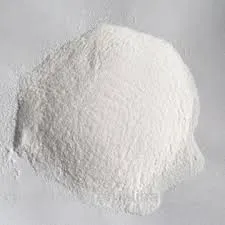
Nov . 20, 2024 18:56 Back to list
hpmc synthesis
An Overview of HPMC Synthesis Applications and Techniques
Hydroxypropyl methylcellulose (HPMC) is a versatile, non-ionic cellulose ether that plays a crucial role in a range of industries, particularly in pharmaceuticals, food, and construction. The synthesis of HPMC involves the modification of cellulose through the reaction with propylene oxide and methyl chloride, leading to the introduction of hydroxypropyl and methyl groups into the cellulose structure. This article explores the synthesis of HPMC, highlighting its significance, methods, and applications.
Synthesis Process of HPMC
The synthesis of HPMC primarily revolves around three key steps cellulose extraction, etherification, and purification.
1. Cellulose Extraction Cellulose is derived from natural sources such as wood pulp or cotton. The extraction process usually involves the removal of lignin and hemicellulose, yielding a pure cellulose product that serves as the backbone for the synthesis of HPMC.
2. Etherification The purified cellulose is then subjected to etherification, where propylene oxide and methyl chloride react with the cellulose. This reaction typically occurs in a controlled environment, involving specific temperatures and concentrations to achieve the desired degree of substitution (DS)—a measure of the number of hydroxyl groups replaced by methyl and hydroxypropyl groups. The DS significantly influences the solubility, viscosity, and other properties of the resulting HPMC.
3. Purification After etherification, the product undergoes purification to remove unreacted chemicals and by-products. This is often achieved through a series of washing and filtration processes. The final product is dried, pulverized, and can be formulated into various grades depending on its intended application.
hpmc synthesis

Applications of HPMC
HPMC has a wide range of applications across various sectors owing to its unique properties like water solubility, film-forming ability, and viscosity enhancement.
1. Pharmaceuticals In the pharmaceutical industry, HPMC is used as a binder and a controlled-release agent in oral formulations. Its high viscosity helps in achieving the desired consistency in suspensions and gels, while its film-forming capability is beneficial in coating tablets.
2. Food Industry HPMC serves as a thickening agent, stabilizer, and emulsifier in food products. Its ability to retain moisture helps enhance the texture and shelf-life of baked goods and dairy products, making it a popular ingredient in low-fat and gluten-free formulations.
3. Construction In the construction sector, HPMC is widely utilized as a superplasticizer in cementitious mixtures, improving workability and water retention in mortars and plasters. This enhances the overall performance of construction materials.
Conclusion
The synthesis of HPMC is a significant area of study due to its vital role in improving product performance across multiple industries. With ongoing research focusing on optimizing synthesis techniques and exploring new applications, HPMC's versatility continues to expand. Its unique properties make it an indispensable material, contributing to advancements in health, nutrition, and construction technology. As industries evolve, the demand for reliable and efficient polymers like HPMC is expected to grow, offering promising avenues for further innovation and development.
-
Versatile Hpmc Uses in Different Industries
NewsJun.19,2025
-
Redispersible Powder's Role in Enhancing Durability of Construction Products
NewsJun.19,2025
-
Hydroxyethyl Cellulose Applications Driving Green Industrial Processes
NewsJun.19,2025
-
Exploring Different Redispersible Polymer Powder
NewsJun.19,2025
-
Choosing the Right Mortar Bonding Agent
NewsJun.19,2025
-
Applications and Significance of China Hpmc in Modern Industries
NewsJun.19,2025







